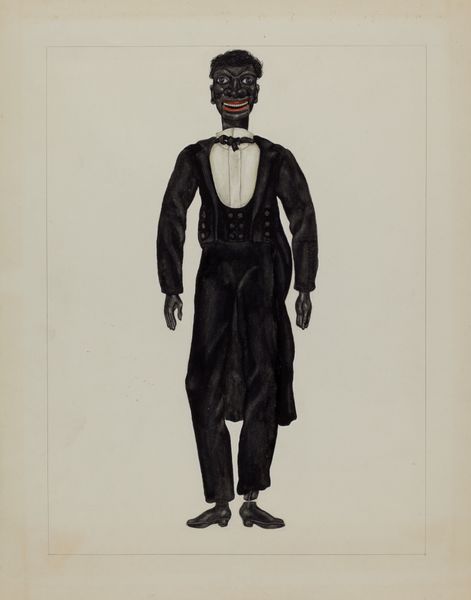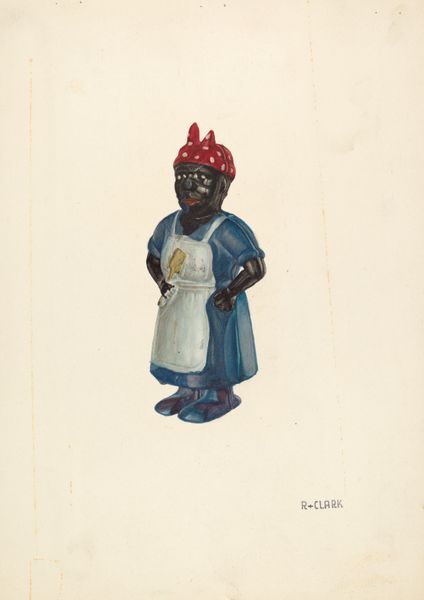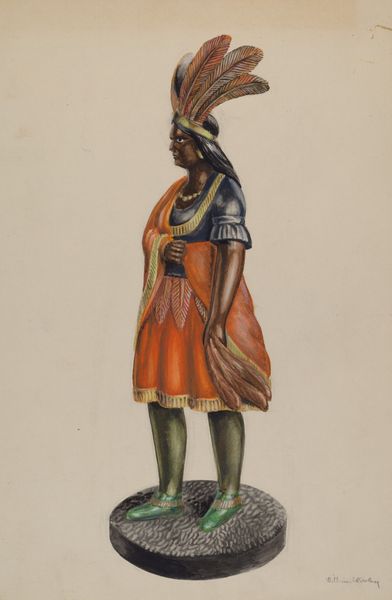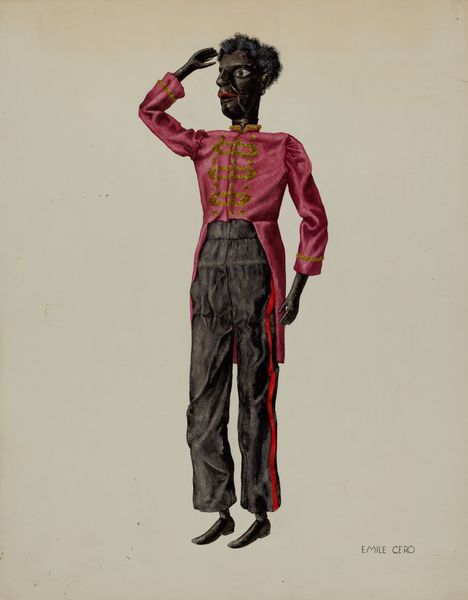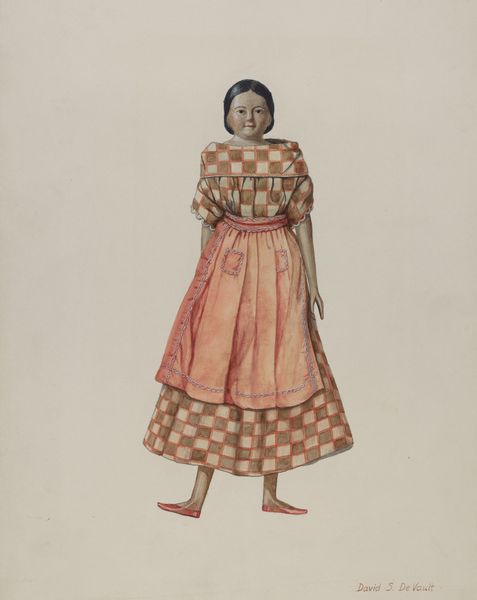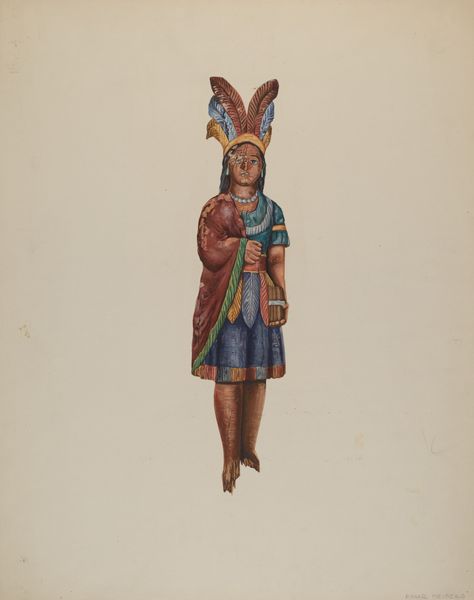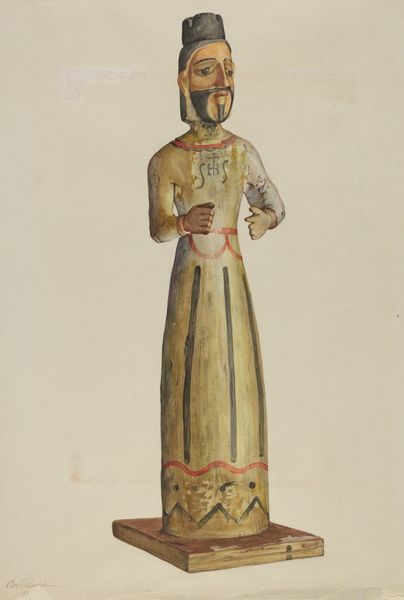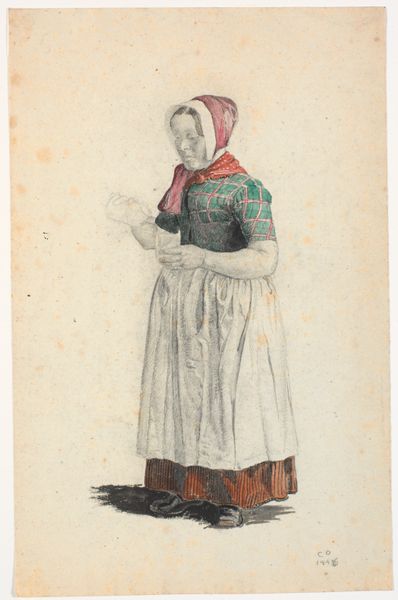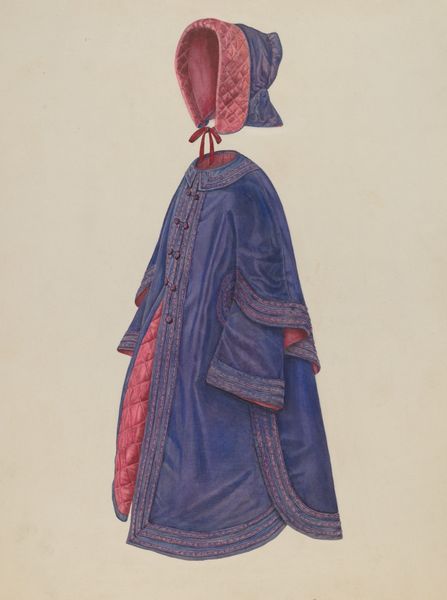
drawing, watercolor
#
portrait
#
drawing
#
caricature
#
figuration
#
watercolor
#
folk-art
#
genre-painting
Dimensions: overall: 45.3 x 35.3 cm (17 13/16 x 13 7/8 in.) Original IAD Object: 24" high
Copyright: National Gallery of Art: CC0 1.0
Curator: We're now in front of "Doorstop Doll," a 1941 watercolor drawing by Renee A. Monfalcone. Editor: There's something immediately haunting about it. The eyes are missing, and the dark face and bright clothes have this sort of celebratory unease. Almost like a clown. Curator: Indeed. The artist captures the aesthetic qualities of folk art and traditions. Notice the specific rendering of her patterned dress and apron. Folk art’s context within material culture emphasizes function, decoration, and the lives of ordinary people. Editor: The rendering feels very flattened, very straightforward, which in itself is telling. Like it's documenting, not embellishing. Curator: Right. Watercolors were often chosen as a pragmatic medium. They’re lightweight, quick-drying, relatively inexpensive—ideal for capturing the nuances of everyday scenes and the accessibility to create images for a broader audience outside of elite circles. It offers incredible insight into a specific time period and artistic vision that favors realism over abstraction. Editor: This watercolor choice also reinforces the theme of a hand-made item portrayed through the accessible process of watercolor. Do you get the impression she tried to imitate a photo? Because that lack of dimension is uncanny. Curator: That’s quite interesting. You could view it through that perspective. Given her artistic technique of drawing, painting, and historical documentation, that reading wouldn't surprise me at all. The style does seem to capture both observation and a personal artistic intention. What is it about this simplicity that sticks with you? Editor: Its deliberate simplicity is so potent. It gives it a sort of truthfulness. It is an effigy that represents more than its sum of its parts; a labor and act of recording all in one. I almost wish it hadn’t been named "Doorstop Doll," as it does a disservice to all the cultural heritage it possesses. It is heavy, if only in my head. Curator: Very well said. It highlights how folk art could become embedded within cultural objects. It allows for critical examination beyond their surface, encouraging us to view them as records. Editor: Right, Renee A. Monfalcone gives an art piece that can mean several things simultaneously: it's a genre-painting and time capsule—a beautiful study and caricature all at once.
Comments
No comments
Be the first to comment and join the conversation on the ultimate creative platform.

